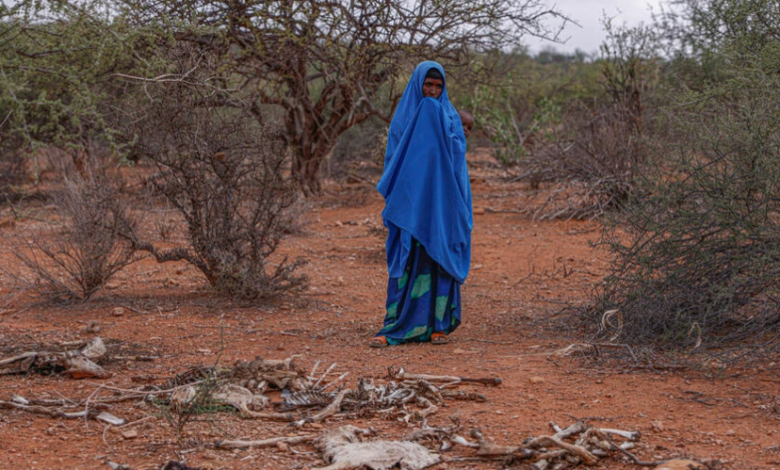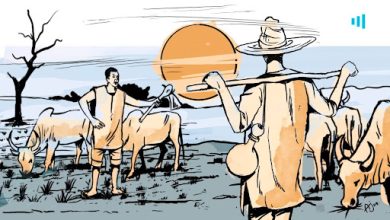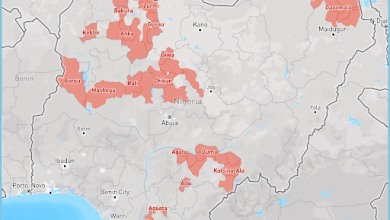Help Not Reaching Most Victims As Droughts In Ethiopia Kill Hundreds
Ethiopia has faced recurring droughts for more than 40 years. The latest incident is affecting over 30 million people, and observers worry the situation might get worse.

“Ethiopia” and “drought” sitting in the same sentence does not come as a shock to those who have studied the country’s history.
Thirty-five-old Hamid Heramo, a small-scale farmer in the South West of Ethiopia, told Farm Africa, an organisation providing support to farmers in eastern Africa, that he is now suffering from depression. Agriculture, which used to be the only means of sustenance for his family of nine, has failed, negatively impacting his income and the physical health of his family.
For him, the problem started in 2015 when he cultivated crops in hopes of a bountiful harvest. However, the clouds were as dry as the land. Months passed without even a single drop of rain, yet the sun did not fail to burn.
There has been a thread of these dry spells in this East African country since 1983, marked by prolonged periods of very minimal rainfall, resulting in water scarcity, deaths of livestock, immense hunger and food insecurity, displacement, and even loss of human lives.
But the latest outbreak, with six consecutive failed rainy seasons, appears to be the worst in forty years. Between 2015 and now, the country has experienced extreme weather conditions, such as erratic rainfall that causes floods and erosion and high temperatures resulting in droughts.
As the weather conditions become more extreme, the hunger crisis deepens. The head of the Ethiopian Institution of the Ombudsman, Endale Haile, accounted for 372 hunger-induced deaths between August and January in the Tigray and Amhara regions, clarifying that there were possibly more cases. Certain southern neighbourhoods, such as Akaki-Kaliti, Bole and Nifas Silk-Lafto, have also experienced significantly higher temperatures.
So far, this endemic has affected over 30 million people, who face harsh conditions, risk starving, and are susceptible to diseases like cholera due to limited safe drinking water. According to the United Nations World Food Programme (WFP), 20.1 million people in Ethiopia urgently need food assistance.
WFP spokesperson Claire Nevil mentioned that it has been difficult to feed these people because there are “multiple crises at a time”, including armed conflicts, droughts, inflation, and disease outbreaks, which are all pushing people into extreme poverty levels.
Signs of another famine?
From 1983 to 1985, Ethiopia faced an extreme wind of famine that led to one million deaths. It was one of the worst humanitarian events of the 20th century. The British Red Cross says that 400,000 refugees left the country during this period, and 2.5 million people were internally displaced.
The leading cause of this famine was a recurring drought that led to failed harvests, food insecurity and scarcity, and conflicts that denied people access to humanitarian aid.
Does this ring a bell?
This may be why many reports suggest that such an episode may unfortunately repeat itself.
Ethiopia’s government, however, refutes the possibility of another famine and says it is actively engaged in providing aid. Still, the UN’s Office for the Coordination of Humanitarian Affairs (OCHA) estimates roughly one-third of those who require food aid are receiving assistance. In Tigray, the situation is particularly concerning, with at least twelve districts already in the grip of a severe drought.
Is climate change to blame?
Conflicts have worsened the drought situation in Ethiopia, with many people suffering from hunger and not getting adequate access to humanitarian aid, most especially in the northern Tigray region, which recently escaped from a two-year conflict, and a little further south in the Amhara region.
However, what do we blame for the recurring droughts?
Climate change has been blamed for worsening heat waves and water-related challenges. But there’s something else at play: El Niño.
El Niño is a natural climate pattern that causes warm water to build up along the equator in the Pacific Ocean and can alter weather temperatures worldwide by impacting rainfall patterns and changing “the odds of flood, droughts, heatwaves and cold reasons for different regions, even rising global temperatures”.
Some scientists and researchers say El Niño is a natural occurrence, but some argue that it may be caused by climate change.
The relationship between climate change and El Niño is still being studied. Findings, however, have shown that although climate change may not exactly cause or trigger El Niño, it most definitely increases its strength, frequency and duration and potentially escalates it.
“The arrival of El Niño means that communities living in lowland areas now have to brace themselves for the onset of further drought conditions and extreme temperatures, which will put additional pressure on already depleted livelihood assets and mechanisms for coping with the effects of climate change,” observed Melaku Yirga, Mercy Corps Country Director for Ethiopia.
Possible solutions
UNICEF, the Ethiopian government, and some other notable organisations are responding to the crises and providing support to people grappling with hunger and diseases.
OCHA reported that “an estimated 1.5 million people in eight drought-affected regions, including Afar, Amhara and Tigray, received food assistance in January 2024.”
However, there is still work to be done.
Humanitarian assistance alone may prove to be a temporary solution if proper climate action is not put in place. This is why the Ethiopian government hopes to “decrease carbon emissions by 68 per cent and restore up to 15 million hectares of degraded and deforested lands by 2030.” It also plans to create “40 adaptation interventions across agriculture, water, forestry, transport, urban, health, and more.”
The United States Agency for International Development (USAID) is currently collaborating with communities across the country to advocate for soil and water conservation and encourage the sustainable utilisation of water resources. It is also adopting innovative approaches to forecast weather patterns and predict impending droughts or other climate-related crises, as well as preparing enhanced measures to recover from such crises if they ever occur.
USAID is also promoting eco-friendly practices in communal land management and agriculture to identify and minimise the factors that drive alterations in land use while promoting sustainable livelihoods that correlate with environmental policies.
It is noteworthy that activities that ensure the protection of forests and other essential ecosystem drivers inadvertently boost livelihoods, greatly reduce some climate change threats, and maintain the natural features that support life and human well-being.
Climate education remains sacrosanct in sustaining these environmental sustainability actions. Children should be taught about sustainable ways of avoiding water waste and ensuring proper waste management. The government should also ensure that community residents participate in tree-planting exercises, avoid bush burning, and perform essential activities to preserve the ecosystem.
Support Our Journalism
There are millions of ordinary people affected by conflict in Africa whose stories are missing in the mainstream media. HumAngle is determined to tell those challenging and under-reported stories, hoping that the people impacted by these conflicts will find the safety and security they deserve.
To ensure that we continue to provide public service coverage, we have a small favour to ask you. We want you to be part of our journalistic endeavour by contributing a token to us.
Your donation will further promote a robust, free, and independent media.
Donate HereStay Closer To The Stories That Matter




